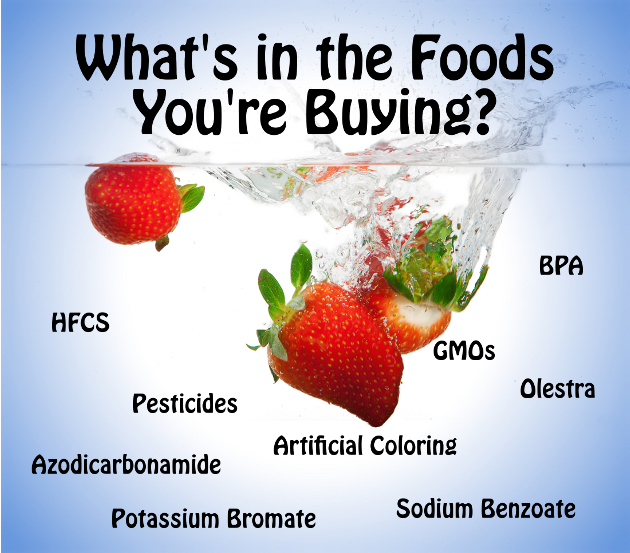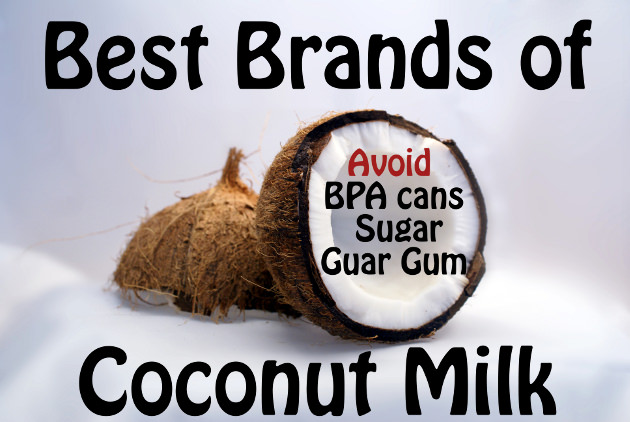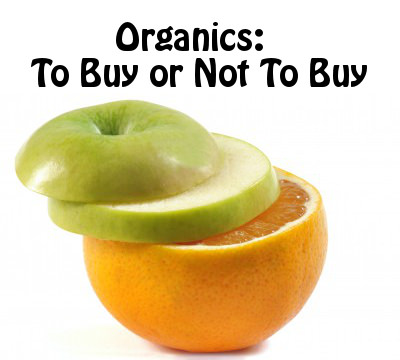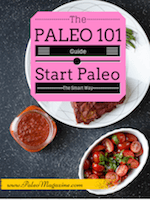What’s in the Foods You’re Buying?

Are you sure you know what’s in those foods you’re buying?
Even if you only buy non-packaged foods (e.g., fresh fruits and veggies or meat from the butcher), you might still be surprised to learn what’s really in your foods!
Your coconut milk, apples, and nuts may not be the bastion of healthiness that you currently believe.
This is what I’ve been discovering while reading Rich Food Poor Food – a superb new book from Mira and Jayson Calton, which you can purchase on Amazon.com).
Here are just a few things I discovered:
Which Brand of Coconut Milk is Best?

I’m a big fan of coconut milk (I add it to my tea instead of milk, and I often cook or bake with it). But many brands of coconut milk contain all sorts of ingredients in addition to coconut milk!
Chris Kresser has previously pointed out 3 reasons why store bought coconut milk may not be that great for you. I’ve been concerned for sometime now about the Bisphenol-A (BPA) and the guar gum in my coconut milk but haven’t been willing to take the time to make my own homemade coconut milk. So I was happily surprised to find in Mira and Jayson’s book 3 brands of unsweetened coconut milk options with no guar gum and in BPA-free containers (page 60 of their book)!
So, the 3 brands are: Natural Value organic coconut milk, Trader Joe’s light coconut milk, and Aroy-D 100% coconut milk original.
I’m waiting for the Natural Value coupon to come out on Feb 26th on Mira and Jayson’s website so I can stock up on coconut milk!
You’re probably wondering…what coupons?
Mira and Jayson have taken the time and effort to contact many companies and have gotten great coupons from them that will be available on their website (caltonnutrition.com) so that we can save money while buying healthy foods.
Coconut milk is not the only food item that they’ve done this research for. They literally went out and found all the safe brands we can buy so we don’t have to waste time doing that.
To Go Organic or Not? 
Organic produce has been in the news a fair amount recently – is it better for you, is it worth the higher price?
For me, the main debate here is pesticide residue versus the price of the produce.
Page 132 of Rich Food Poor Food has a colorful chart (actually the entire book is in color!) that tells you which foods generally contain very little pesticide residue (e.g., onions, avocados) – so you can buy the regular ones – and which foods generally contain high pesticide residue (e.g., apples, cucumbers) – so you should buy the organic version of those.
I love these simple tips that make my life so much easier! In fact, a wallet-size version of this chart is going to be available from their website to download, so I won’t even have to memorize it!
Not All Nuts Are Created Equal

I’m often concerned about eating too much food that’s high in omega-6s (Mark provides a good overview of this issue here). And I’ve actually been concerned about the high omega-6 content of my sunflower butter! Pretty much all nuts and many seeds (flax and chia seeds are exceptions) contain higher quantities of omega-6 than omega-3, but macadamia nuts have pretty low concentrations of both. The chart also has a useful soaking time column (for decreasing the amount of phytic acid in the nuts).
So what did I do after reading this? I went ahead any bought myself a jar of this macadamia nut butter – don’t ask me what you can use it for, because I just eat it by the spoonful out of the jar!
What about Kerrygold butter, spices, Greek yoghurt, and tuna fish, and what’s the best brand of Ketchup?
I can’t tell you everything…
There’s so much information packed in the book that I can’t even start to write it all down. So if you want to find out the best brands of ketchup (there’s one that’s sugar free, raw, organic, and filled with probiotics), as well as every other food you buy, in addition to various potential problems with foods like Kerrygold butter, spices, Greek yoghurt, and tuna fish, then you should definitely order a copy of Rich Food Poor Food.
I would really suggest ordering the Kindle version if you have a smart phone so that you can take it shopping with you.
My Disclaimer
I met Mira and Jayson just under a year ago, and they are the sweetest couple! They had just come out with their first book at that point (Naked Calories, which I also reviewed) and had created a technology that ensures your vitamins and minerals didn’t compete with each other in your body (in order to maximize their absorption and usefulness). I found their ideas fascinating and novel and admired their dedication to helping everyone regain their health. So that was a long way of saying, yes, I know them, so this review is not completely unbiased. I also want to acknowledge that food products made by Louise’s Foods, a grain-free food company I co-founded, are recommended by Mira and Jayson in their book and on TV (http://fxn.ws/XH9ZWl) as healthy alternatives to conventional cereals and granolas. Finally, I wanted to point out that all links to Amazon.com are affiliate links (just like all the links on pretty much all blogs). This means I make a small percentage (approx. 6%) on any purchases you make through the link (you don’t get charged anything extra – Amazon pays it out of their pocket), which generally goes to the upkeep of this blog.
Images: Copyright (c) 123RF Stock Photos SXC.
Disclaimer: I received a copy of this book for free for review purposes. I received no other compensation, and this review is based on my own opinion. Note that some links on this page (and throughout this website) are affiliate links.

